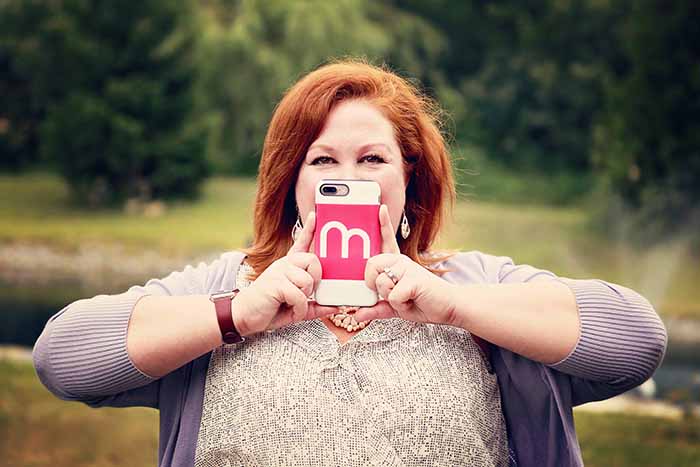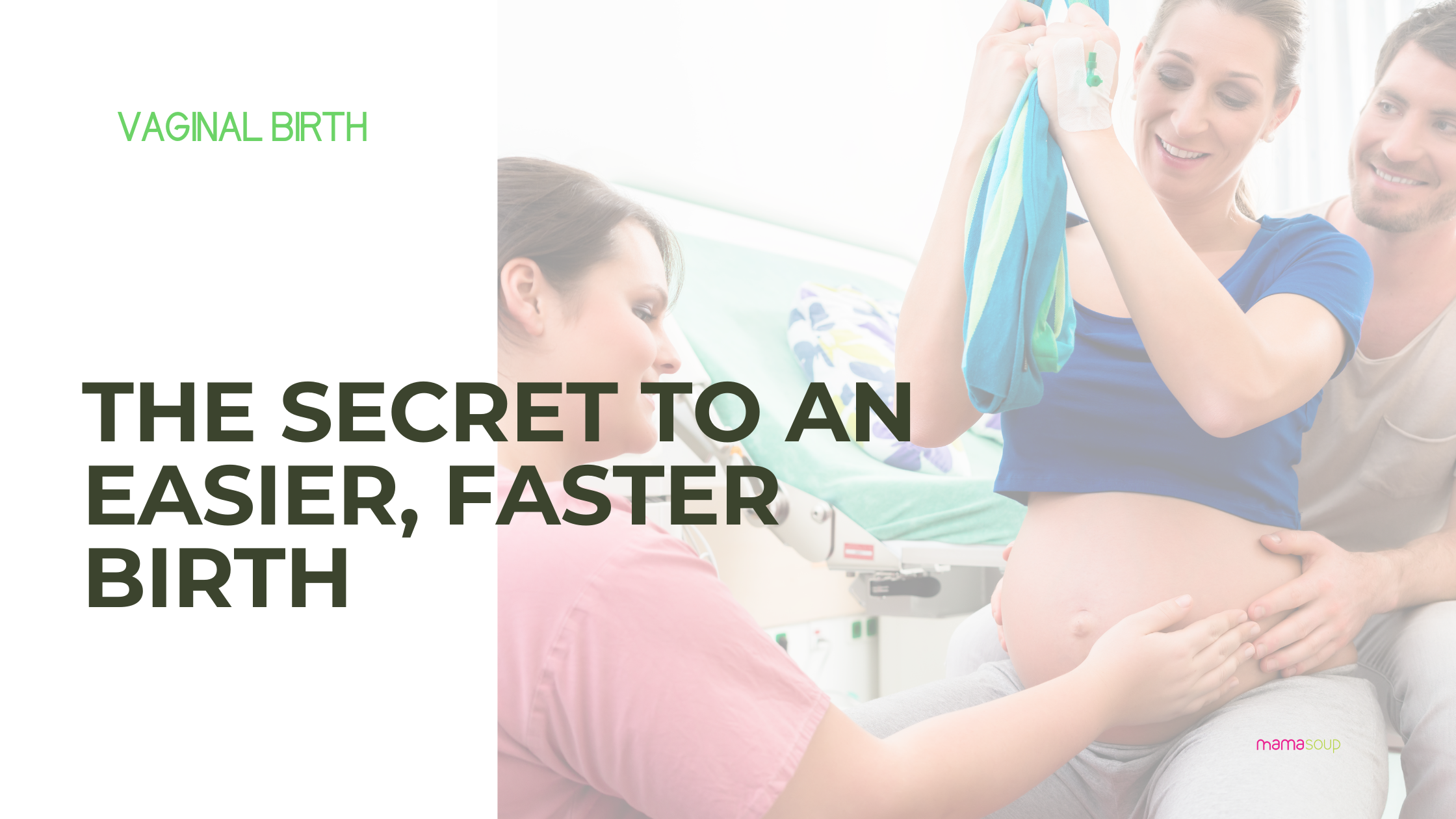Caesarean Birth: 10 Ways to Avoid a C-Section
Giving birth by cesarean isn't an easy way to have a baby. It comes with more potential problems: in fact, a c-section recovery takes longer and has an emotional toll that can last a lifetime. Between the delayed healing of the incision and that little pooch on your belly that never goes away, having a caesarean is tough.
If anyone tells you that it’s “the easy way out” of birth, you can be certain that they’ve never done it.
As a nurse, I’ve scrubbed into countless caesareans and I’ve helped as many mamas recover. As a mom, I’ve had two of my own. In my opinion, there's no better term for a woman who has a belly-birth than “birth warrior”.
There are lots of instances where a caesarean birth is the safer option for mom or baby. In my case, there was a history of my babies getting stuck on the way out- it's called shoulder dystocia and they had to break my first two babies’ collarbones. In that situation a baby can become paralysed or even die, so we made the tough decision to give birth by caesarean based on a solid medical history.
In 2017, about 30% of Canadian babies were born by a belly-birth. The World Health Organization (WHO) believes that only 15% of birth should happen by caesarean.
So why the discrepancy? It seems that a lot of women start their low risk, healthy labour and then go to the hospital to give birth.
At the hospital, a labouring woman is on an invisible timeline based on:
-
how long she’s been labouring
-
how strong and frequent her contractions are
-
how long the hospital accountants deem a labour should take in order to meet budgets
-
how many beds are available
-
how well the birthing unit and NICU is staffed.
Obviously she’s being monitored in labour to make sure her and the baby are tolerating it well, but if any of the monitors blip in the wrong direction, all of the above will be taken into consideration when making a decision about whether to let a labouring mom continue to progress or move straight to the operating room.
Now, like I said- I’ve had two caesareans so I obviously agree that they can be necessary. But like I also said, I’ve been on the birth team when these decisions were being made. The good new is that you can do some things to avoid a caesarean when you've had a normal, low-risk pregnancy.
LET LABOUR START ON ITS OWN
We often sit and count down the days to that magic date that our doctor gave us because we’re so excited to meet the baby. But if you can let go of that and imagine yourself having your baby up to 2 weeks past that date, it reframes your brain to accept every day past your "due date" as a step in the right direction, instead of a failure to “hit a target”. This is especially important for Type A moms who feel satisfaction from meeting deadlines.
Let labour begin on its own, in its own time so you can avoid induction. Studies show, inducing labour almost DOUBLES your chance of having a caesarean.
If a doula were a drug, it would be unethical not to use it.
Dr. John H. Kennell
HIRE A DOULA
Ok - I know I’m biased because I've been a doula for almost 20 years, but having skilled, continuous support in labour has been scientifically proven to reduce your chance of caesarean by about 30%.
Some hospitals now have doulas on staff and a few insurance carriers now cover doula care. Your partner knows you best during birth, but a doula knows birth best.
(RELATED: 7 Reasons to Hire a Doula Even You're Having an Epidural)
(RELATED: 20 Questions to Ask in a Doula Interview)
STAY HOME IN EARLY LABOUR
If you are at or past your expected date of birth and you’ve had a normal, low risk pregnancy- stay home in early labour!
The average length of a labour for a first birth is between 12-17 hours and some early labours can last for days! Stay home and rest, walk, move freely, have a bath or shower and eat!
(RELATED: The 5 Best Positions to Get Into Active Labour)
ASK FOR INTERMITTENT MONITORING
In a normal birth, it’s just as safe to have a hand-held fetal monitor as it is to be connected to a machine. The difference is, if you’re not strapped and lying in bed, you’re free to move!
There are a couple of issues with being connected to a fetal monitor in bed:
1) You're left in bed too long to get a "good reading"
2) Human error if your nurse is fairly new to reading the data. This can lead to other interventions like augmenting your labour with pitocin or breaking your water unnecessarily in a perceived urgent situation.
GET MOVING!
Use a birth ball, a rocking chair, walk the halls, start dancing and get on all fours-
Research shows that moving frequently can shorten labour by about an hour!
It also reduces your chance of having a caesarean for “Failure to Progress” because if you’re moving, you're helping to encourage contractions and helping the baby move down.
(RELATED: The 5 Best Positions to Get Into Active Labour)
REQUEST A SALINE LOCK
If you give birth at a hospital that has a policy about having a labouring woman on an IV, ask for a saline lock. They place the IV catheter in your hand/arm and cap it off so you don’t have to drag a bag and pole with you. If they need to give you any medications quickly, the vein is open for business!
USE NATURAL METHODS OF PAIN RELIEF
Hear me now- I will never, ever judge another human’s pain. Ever. All I’m saying is that you should at least try to use alternative methods before you rush for an epidural.
Why?
Because as soon as you get an epidural, you are introduced to other interventions: you lay in a bed and you have an IV. Try to use non-medical methods for coping like: moving, breathing, hypnosis, a shower, a TENS machine.
(RELATED: 6 Interventions to Avoid During Birth)
REQUEST MORE TIME IN LABOUR
As long as you and the baby are tolerating labour well, it’s ok if it’s longer than average.
Plateaus in labour are completely normal and they don’t necessarily mean something is wrong.
Sometimes they happen so you can rest up for the next phase of labour.
DON’T PUSH UNTIL YOU FEEL THE URGE
Even if you have an epidural, it’s best to wait until you feel the urge to push. Your body will tell you when it’s time- you don’t need somebody yelling a countdown at you.
If everything is going well with your labor and you feel too frozen to push, ask to sit up for awhile and wait it out! If you push and you can't feel it, you'll increase your risk of tearing. Girl, no.
(RELATED: How to Push Your Baby Out Without Tearing a Damn Thing.)
(RELATED: Video: Using the 3 Stages of Pushing to Avoid Tearing)
(RELATED: 5 Steps to Perineal Massage so You Don't Tear During Childbirth)
BELIEVE IN YOUR BODY
This is probably the hardest for many women, but your body is amazing and it’s meant to give birth!
According to the WHO (World Health Organization), about 85% of the women in the world are meant to give birth vaginally. It’s safer for you and your baby.
(RELATED: 5 Things Standing Between You and Your Natural Birth)
Your memories of birth stay with you forever, Mama. As someone who has given birth both vaginally and by belly, I’m urging you to do everything you can to avoid a caesarean. It’s not advice based on judgement, but on experience- as a mama and a nurse. Caesarean birth affects you long after the scar has healed.
Post Gallery
Hey there, I’m Joanne.
I’ve spent about 20 years serving women as a nurse, doula and Lamaze educator. I have 4 kids and I know firsthand how lonely and isolating motherhood can be, so I created MamaSoup. I'm mostly known for my love of red wine, spontaneously singing and my confidence in being my true self on social media. When I’m not busy building women up, you can catch me taking Instagram stories of my bulldog Ruby, watching The Handmaid’s Tale, playing MUber (Mom Uber) to my kids or vacationing in my favourite town: Cabo San Lucas, Mexico.
I love serving the world by providing a space for moms to connect and support each other. In my opinion, moms are the backbone of communities because they are (literally) raising the future!
As the founder and CEO of MamaSoup, I’ve been featured on CHEX TV Morning Show, KawarthaNOW, Economic Development- The City of Kawartha Lakes and MyKawartha.
Still with me? Join me over at MamaSoup to keep the conversation going!
Read More










